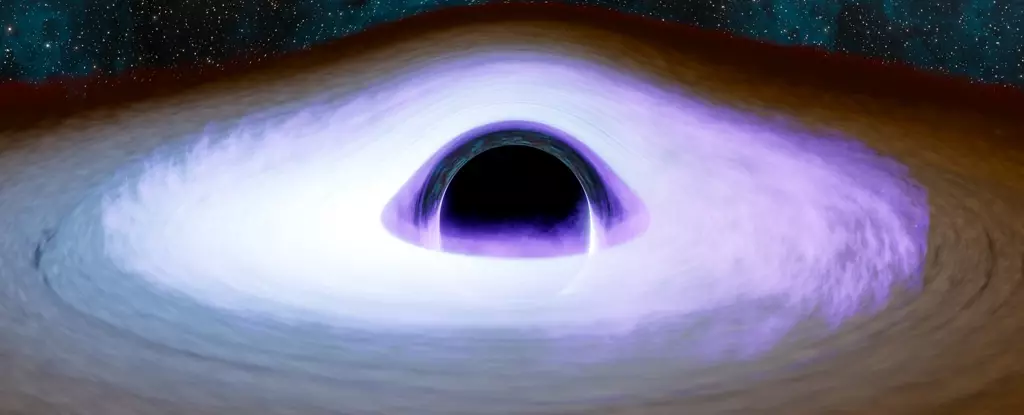The universe holds many secrets, but few are as enigmatic as black holes. Often depicted as voracious cosmic vacuum cleaners, consuming everything in their vicinity, black holes also possess fascinating features that have remained hidden from human eyes. One of these features is the corona—a hot, diffuse region enveloping black holes that mirrors the solar corona we observe during a total solar eclipse. This article delves into recent advancements in our understanding of black hole coronæ, offering fresh insights into the dynamics of these colossal entities.
To comprehend the concept of a black hole corona, it is essential to first grasp the idea of the solar corona. Observed only during total solar eclipses, the solar corona is a halo of plasma that shines with a mysterious brilliance, with temperatures soaring into millions of degrees. It exists despite being in a state that we would consider vacuum on Earth, illuminating the stark contrast between the dense core of the Sun and its whispy outer atmosphere. Analogously, theoretical models suggest that black holes, too, should possess a corona. Yet, observing the corona around a black hole poses significant observational challenges due to its elusive nature.
In traditional models of black holes, surrounding these entities is a toroidal structure composed of gas and dust termed the accretion disk, which contains matter being attracted into the black hole. From the poles of the black hole, jets composed of ionized gas shoot outward at relativistic speeds. This combination of structures gives rise to the diverse array of Active Galactic Nuclei (AGNs) visible across the cosmos—phenomena greatly influenced by the orientation of the black hole in question.
A groundbreaking study published in The Astrophysical Journal has shed light on this intricate phenomenon. By exploiting techniques analogous to those used to observe the Sun’s corona, researchers have embarked on a quest to identify the black hole corona. Their strategy hinges upon manipulating viewing angles; while some black holes are obscured by gas and dust, others reveal their accretion disks directly. This dichotomy categorizes black holes into obscured and unobscured groups, significantly impacting what can be observed.
For obscured black holes—akin to an eclipsed Sun—the accretion disk’s brilliant light becomes unobservable. Yet, despite this blockage, the intense heat of the corona produces extraordinarily high-energy X-rays, which can scatter off surrounding materials in the torus. This scattered light becomes detectable, permitting observations of the previously elusive corona, thereby offering a window into understanding black holes’ final moments of material consumption.
Utilizing data from NASA’s Imaging X-ray Polarimetry Explorer (IPXE), researchers investigated a dozen obscured black holes, such as Cygnus X-1 and those located in the Large Magellanic Cloud—LMG X-1 and X-3. Remarkably, not only did they manage to detect the scattered X-rays from black hole coronæ, but they also identified a striking pattern: the corona appears to surround the black hole in a disk-like configuration rather than the spherical distribution observed in the solar corona. This discovery suggests that the mechanics of black hole coronæ may be radically different than previously assumed.
The implications of this research are profound. An enhanced understanding of black holes and their coronæ could lead to refined models detailing the matter absorption mechanisms while providing insight into the spectacular displays of energy evident in distant AGNs. By piecing together these cosmic puzzles, astronomers are gradually shifting the boundaries of what we know about black holes and their interactions with the surrounding universe.
The study of black hole coronæ is an evolving frontier in astrophysics. As technological advancements allow astronomers to observe these enigmatic regions more effectively, we inch closer to unearthing the profound mysteries surrounding black holes. With persistent efforts and innovative techniques, the ultimate goal remains clear: to decode the secrets of these immense cosmic structures and their role in the genesis of galaxies and the universe itself. The revelations lie ahead, waiting to be discovered as we continue our quest into the depths of space.


Leave a Reply